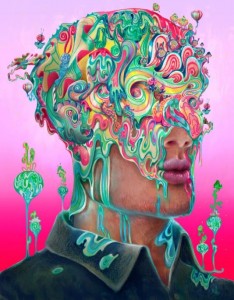Since ancient times, civilizations have used different nature-derived substances to heal illnesses, protect against diseases, and improve the overall quality of people’s lives. Since then, medicine has come a long way, and in recent centuries, chemists have begun to experiment with synthesized chemicals from natural substances. Many of these chemicals have led to many effective drugs while some have led to undesirable consequences.
In fact, many of the illegal or heavily controlled drugs we have today were once created with the best intentions and used to be prescribed by doctors and pharmacists for reliably treating a number of ailments. Let’s take a look at them here:
Here are the 9 most dangerous mind-altering drugs that used to be legal:
1. Opium. Opium was first cultivated in the ancient city of Mesopotamia way back 3400 BC. It has long been used to provide pain relief, one of the earliest forms of anesthesia. It was first banned in China in the 18th century where it was widely used as a recreational drug. In the US, it was prescribed to treat pain in the 19th century, even used to treat teething pain in infants. It wasn’t until the early 20th century that it was banned in the US as an illegal drug.
2. Morphine. Morphine was the first synthesized substance purified out of opium. It was also widely used as pain relief, and it was in high demand during the wars of the 19th century. However, it was found to also have a high potential for psychological dependence and addiction, and was therefore highly controlled since.
3. Heroin. Created as an alternative to morphine, heroine used to treat coughs, pneumonia, tuberculosis, and other respiratory ailments. It was discovered, however, that patients have to be given larger and larger doses to be effective in the long run. Many of the patients also like using the drugs long after their treatment was over. It was even worse than morphine. Therefore, in 1924, it became illegal worldwide.
4. Ecstasy. Ecstasy was first discovered in late 19th century, but it was in the 70s when it was used to aid in psychotherapy sessions. It was said that the substance helped patients open up more and become introspective. However, the drug was taken out of the clinics and into nightclubs, where dependence and addiction resulted shortly thereafter.
5. LSD. In a curious incident, the man who discovered it accidentally consumed it in 1943 and experienced vivid hallucinations right after. Since then, it was used by psychiatrists from the 40s through the 60s, though there is no valid medical study that supports its use. During those times, it was also widely distributed and consumed in parties and clubs, so it was banned in 1967 in the US.
6. Cocaine. Cocaine is from the coca plant native in South America, where it was broadly used for a wide range of medicinal purposes. Modern scientists then discovered it and used it to treat depression and, strangely, morphine addiction. It was restricted in 1814 and is a controlled substance in 1970.
7. Methamphetamine. Created by a Japanese chemist in 1944, methamphetamine was used to treat various medical conditions such as narcolepsy, depression, alcoholism, and even allergies. However, it was found to be highly addictive and so was listed as a controlled substance. Today, it is still used to treat ADHD and obesity.
8. Cannabis. Cannabis, or marijuana or weed, is well-known as a recreational drug, thanks to media. It was also used medicinally for people who undergo chemotherapy and those who suffer with HIV/AIDS as it helps reduce nausea and vomiting. It was banned in the 1950s but today it’s become legal in some countries and some states in the US for its medical uses.
9. Absinthe. Absinthe is a green spirit made by distilling wormwood, a bitter-tasting plant. Wormwood was used in ancient times as a remedy for various ailments. In the 18th century it was used as a medical elixir and as a preventive treatment for malaria. Soon, it became a popular drink in bars and cabarets in France. It was also the drink of choice by poets and artists in the Bohemian revolution. It was finally banned in the early 1900s due to extreme side effects such as disorientation, hallucination, and high alcohol content. Nowadays, absinthe has a modern revival and is not illegal in some countries anymore.



Recent Comments